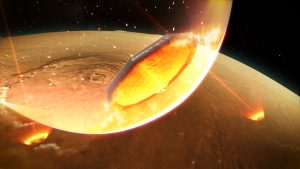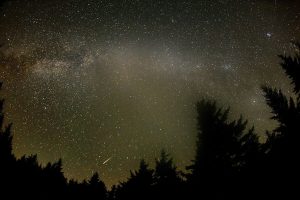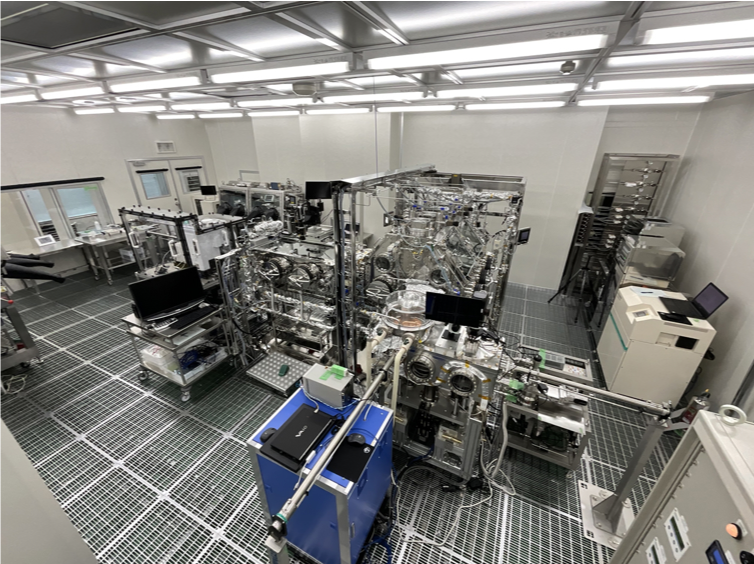
NASA, we’re ready for Bennu!
On the JAXA Sagamihara campus are rooms where a cubic foot must contain less than 1,000 suspended particles of dust. The temperature sits at 22°C with less than a 2 degree variation allowed, and the 50% humidity is permitted to vary by no more than 10%.
These are the clean rooms for the Extraterrestrial Sample Curation Center (ESCuC). It is here that samples returned from space are analysed by scientists clothed head-to-toe in personal protective equipment (PPE). All of this is to prevent any part of the Earth’s biologically rich environment reacting with minerals that were formed 4.6 billion years ago at the start of the Solar System.
And if the samples were 1000 year old Yamato-e art works, then the Earth’s environment is a paint spray can.

Until this year, there were two rooms dedicated to particular samples from space. The first is for grains from asteroid Itokawa, returned to Earth by the JAXA Hayabusa mission in 2010. The second room is for the sample from asteroid Ryugu, returned by the JAXA Hayabusa2 mission in 2020.
This month, the curation centre has expanded again to include a third planetary sample room. It is here that JAXA will receive part of the sample from asteroid Bennu, returned to Earth in September 2023 by the NASA OSIRIS-REx mission.
Launched two years after Hayabusa2, the OSIRIS-REx and Hayabusa2 teams have worked closely together throughout both missions. NASA scientists shared tools such as the software for generating a map of the asteroid shape, which was of significant help when selecting a landing site. And when Hayabusa2 dropped to the asteroid surface to collect a sample, NASA scientists had a front-row seat ahead of their own journey down to the “Nightingale” crater on Bennu’s equally rugged landscape. But perhaps the greatest excitement was when the two teams agreed to exchange part of their samples, collected from two different asteroids.
Six of the most popular questions asked during a Q&A with Hayabusa2 and OSIRIS-REx scientists. This Q&A was just a year before the sample from asteroid Bennu arrived back on Earth.
Initial analysis of the samples from Ryugu and Bennu has revealed that the asteroids both have a chemical composition similar to Ivuna-type carbonaceous chondrites. This class of meteorite has a composition very close to that of the Sun, suggesting that both Ryugu and Bennu formed very early on in the Solar System’s history, as the planets were starting to form.
Such primitive samples are extremely valuable for investigating how the planets formed and even how the first water and organics for life might have been brought to the Earth. But with a sample from a single source, there is always the risk of an anomaly. Analysing samples from two separate asteroids therefore more than doubles the scientific worth of the study. It is an addition sometimes referred to as the “X–factor”.
Before the missions returned their precious samples, NASA and JAXA signed a Memorandum of Understanding (MoU). 10% by weight of the Ryugu sample would go to NASA, and 0.5% of the Bennu sample would come to JAXA. The seeming disparity is due to the expected sample yields. While Hayabusa2 sampled from two different sites on asteroid Ryugu, the mission sampling technique was expected to return a smaller total sample than that collected by OSIRIS-REx.

As it happened, both missions greatly exceeded their goal. Hayabusa2 had a minimum requirement for success of 100mg of collected sample, but returned 5.4g. OSIRIS-REx had planned to return at least 60g but returned a stunning 121.6g of material, the largest sample ever recovered from an asteroid.
The joint analysis of the samples from Ryugu and Bennu will be the first opportunity in the world for an asteroid comparison. To ensure the best scientific output, the MoU stipulated that the samples distributed between the two space agencies should be “representative” of the recovered sample (not consisting purely of any minority grains that might have different properties from the majority of the sample) and should be “unprocessed” (original state preserved). Examples of meeting the latter condition include that the sample has never been exposed to the Earth’s atmosphere and there’s been no contamination from the environment, and that there has been no damage to the specimen during observations (for example, no use of high energy radiation such as X-rays, ultraviolet or electron beams).
The agencies agreed that the samples would be delivered within one year of the sample arriving back at Earth. In November 2021, the sample from asteroid Ryugu was delivered to the NASA Johnson Space Center in Houston, Texas. Now with the completion of the new clean room, JAXA is preparing to welcome the Bennu asteroid sample this summer.

The new clean room is similar but not identical to the previous two clean rooms. One difference is that the clean rooms for the Hayabusa and Hayabusa2 samples had to include vacuum chambers for the initial opening of the sample container and the storing of samples for future analysis.
The opening of the sample container can also be a complex task, as the container is tightly sealed to protect the asteroid samples from the Earth’s atmosphere during re-entry. The NASA team had to develop a new customised tool that could be used in the clean room when the lid on the OSIRIS-REx sample container became stuck.
But with that process completed at the NASA Johnson Space Center, the JAXA team will receive the sample enclosed in the very un-reactive nitrogen gas. These can be opened in similarly nitrogen-filled clean chambers, which can be accessed with gloves so that the containers can be opened by hand without specialised equipment.
For the layout of the analysis instruments, the curation team has also learned from difficulties faced during the analysis of the Hayabusa2 sample.
“We improved the clean room design,” said Usui Tomohiro, Manager of the Astromateriasl Science Research Group. “We wanted to be able to analyse exactly the same region of interest (ROI) on a sample tray with multiple instruments. The set-up for Hayabusa2 required us to move the samples back and forth for each measurement, resulting in losing fine (micron) scale X-Y positioning between each analysis.”

To minimise movement of the sample as it is transferred between instruments, the new OSIRIS-REx clean chambers have multiple instrument ports. The sample can then remain stationary as it undergoes several different analyses.
The first several months after the arrival of the OSIRIS-REx sample will be dedicated to creating an “initial description” of the Bennu grains. This includes weight measurements, imaging with both visible light and infrared light microscopes, and infrared spectroscopy that measures the different wavelengths of infrared light reflected from the sample grains. The infrared analysis is particularly sensitive to water content and organic substances in the sample.
The infrared spectroscopic imager, MicrOmega, has been loaned from the Institut d’Astrophysique Spatiale in France, and has proved an invaluable addition during the analysis of the Hayabusa2 sample. The grains from asteroid Ryugu are nearly completely black in optical light, but reveal a plethora of hydrated minerals under infrared examination. It was the first time a curation facility had used near-infrared for extraterrestrial samples, and it is now considered part of the essential analysis.
After the initial description is complete, the sample will be distributed for detailed analysis at other research institutes. The big questions will be on the similarities and differences between these two asteroids.
“Promoting the comparative study will be a focus for ISAS,” says Fujimoto Masaki, JAXA ISAS Deputy Director General. “We will share everything that we have learned from the Ryugu sample studies.”
Ryugu and Bennu consist of the earliest rock formed in our Solar System. Where they formed, the molecules and compounds that developed, and the common and different evolutions that these two small bodies experienced may contain the clues to the chances of life arising in a planetary system.
Further information:
The OSIRIS-REx curation facilities at ISAS
The OSIRIS-REx mission (external site)
(Video) 7 differences between Hayabusa2 and OSIRIS-REx
(Video) The Hayabusa2 sample from asteroid Ryugu: 2 year summary
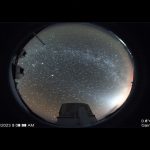 Previous Post
Previous Post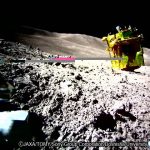 Next Post
Next Post